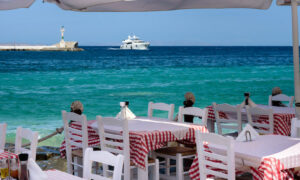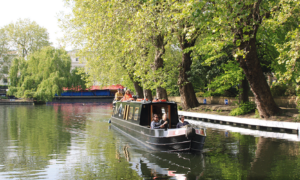Editor’s note: This is Pt. 2 in a two-part tutorial meant to help you read a French wine label like a connoisseur. You can see Pt. 1 here with more details about the mysteries of French wine.)
Remember those milk cartons that printed photos of missing children on the packaging?
Well, sometimes, it seems like the French wine industry has a similar problem, except that their missing information is about what’s inside their wine bottle.

This photo of Crozes Hermitage label (which shows the location and the name of the producer, Appellation d’Origine Contrôlée (or in this case Appellation d’origine protégée) that sets standards, and that the wine was made and bottled by the producer. What it does not say is that the producer is a wine cooperative and not an estate. It is a very nice wine for the price, nonetheless.
The back label gives the purchaser (in French and English) all of the pertinent information needed in order to make a well informed selection: their website, that the region is Crozes-Hermitage in the Rhône and made with syrah grapes which would be ready to drink relatively soon but respects the terroir. Additional information shows that the winmakers engage in a quality chart that develops durability in their growing practices.
By law the wine must list its alcohol content. In this case it is 14-percent alcohol (that could be cellared for some time).
Pro tip: The length of the cork indicates the wine could be cellared longer. It was long and made of solid, not composite cork.
Cheat sheet
If you like (choose your varietal) then shop for (the region listed below):
WHITES
If you like:
Sauvignon Blanc (grape variety), look for Sancerre or Pouilly-Fumé
Note: the Loire Valley is the classic French region for Sauvignon Blanc
If you like:
Semillon or Sauvignon Blanc (grape variety), look for Bordeaux Blanc
Key appellations are Entre-Deux-Mers, Graves, Pessac-Léognan
If you like:
Chardonnay (grape variety), look for Borgogne Blanc
Key appellations are Mâcon, Pouilly-Fuissé, Meursault, Chassagne-Montrachet, Puligny-Montrachet and Chablis
Note: Known for the finest chardonnay in the world, expensive high quality ones will be listed Premier Cru or Grand Cru
If you like:
Riesling (grape variety), look for Alsace
Note: grape variety is typically listed on Alsace wines
REDS
If you like:
Syrah (grape variety), look for Northern Rhone
Note: key appellations are Cornas, Crozes-Hermitage, Hermitage, Saint-Joseph
If you like:
Cabernet Sauvignon (grape variety), look for Bordeaux
Key appellations are Bordeaux, Médoc, Haute-Médoc, Graves, Pauillac, Margaux, Saint-Emilion, Pomerol
Note: Bordeaux typically offers a blend of Cabernet Sauvignon, Merlot and to a lesser degree Cabernet Franc, Petit Verdot and Malbec (also known as Cot) in their blend.
If you like:
Pinot Noir (grape variety), look for Bourgogne Rouge (Burgundy)
Key appellations are Côte de Beaune-Villages, Côte de Nuits-Villages, Gevrey-Chambertin, Nuits-Saints-Georges
Note: Driving through Burgundy is like reading a wine list. The appellations are so prolific. If it is red and from Burgundy, then rest assured, it is Pinot Noir.
If you like:
Gamay, look for Beaujolais

Shop by wine region in a French wine shop or grocery store.
The chart below lists each region’s most famous grape varieties:
Region: Alsace
Cepage: Riesling, Pinot Gris, Gewüztraminer (white)
Pinot Noir (red)
Region: Burgundy (Bourgogne)
Cepage: Pinot Noir (red), Chardonnay (white)
Region: Beaujolais
Cepage: Gamay
Region: Rhône
Cepage: Syrah, Grenache (red)
Region: Corsica (Corse)
Cepage: Red and Rosé blends
Region: Provence
Cepage: Rosé blends
Region: Languedoc-Roussillon
Cepage: Grenache, syrah and Carignan blends (red)
Region: Southwest
Cepage: Rosé blends, Malbec (red)
Region: Bordeaux
Cepage: Cabernet Sauvignon, Cabernet franc and Merlot (red)
Region: Loire
Cepage: Sauvignon Blanc, Muscadet, Chenin Blanc (white)

About the author:
Alice Verberne is a freelance artist and writer who purchased the École des Vatelottes in 1999. The historic building is located three hours southeast of Paris in the rural hilltop village of Bourmont, France. Her mission is to create an atelier as a meeting point to connect visitors to local artisans. She works as a consultant for GB Marketing Research Solutions writing feasibility studies for entrepreneurs.
See all of Alice’s posts here.
See more about France on Dispatches here.
See more posts about wine here.
Alice Verberne is a contributing writer for Dispatches Europe. She has worked in print journalism and magazine production in the United States and Europe throughout her career. She currently resides in France where she enjoys visiting former French speaking colonies and discussing history with the locals.















